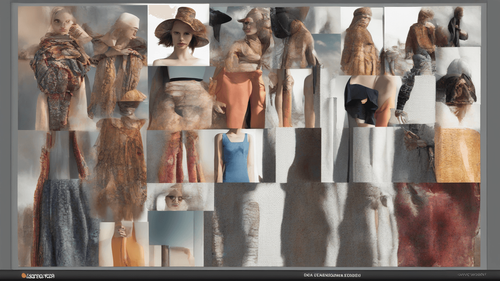
Introduction
In the realm of graphic design and digital illustration, Adobe Illustrator stands as a paramount tool for professionals. One of its remarkable features is the capability to convert raster images into scalable vector graphics, known as "Adobe Illustrator image to vector conversion." This process not only ensures superior image quality but also opens up possibilities for resizing and manipulation without any loss of fidelity. In this comprehensive guide, we delve into the intricacies of mastering Adobe Illustrator image to vector conversion, offering techniques, insights, and FAQs to empower both beginners and experienced designers.
Adobe Illustrator Image to Vector: Unveiling the Magic
The process of transforming a raster image into a vector format is nothing short of magical. With Adobe Illustrator's advanced algorithms, you can achieve this seamlessly. The software traces the edges and colors of the raster image, converting them into mathematical equations that define shapes and colors. As a result, you get a vector graphic that can be scaled infinitely without compromising quality.
Understanding Raster and Vector Graphics
Before delving into the conversion process, it's essential to grasp the difference between raster and vector graphics. Raster images are composed of pixels and have a fixed resolution, making them suitable for photographs. Vector graphics, on the other hand, are based on mathematical equations, enabling them to maintain their sharpness and clarity regardless of size. This is the core principle behind Adobe Illustrator's image to vector conversion.
The Power of Adobe Illustrator's Live Trace
Adobe Illustrator's Live Trace feature is the backbone of image to vector conversion. This feature automates the process by tracing the contours of the raster image and creating corresponding vector paths. It offers various presets and customization options, allowing users to balance between accuracy and simplicity.
Step-by-Step Image to Vector Conversion
Converting an image to a vector involves several steps, each contributing to the final result. Here's a simplified breakdown:
Import the Raster Image
Open Adobe Illustrator, import the raster image you want to convert.
Access the Live Trace Panel
Go to the "Object" menu, navigate to "Image Trace," and select "Make."
Choose Presets or Customize Settings
You can opt for presets like "Black and White Logo" or customize settings to achieve the desired effect.
Expand and Refine the Vector
After tracing, expand the object and refine the vector paths using the "Pathfinder" tool.
Edit and Enhance
At this stage, you can edit individual paths, adjust colors, and refine the vector until satisfied.
Advanced Techniques for Flawless Conversion
To truly master Adobe Illustrator image to vector conversion, consider these advanced techniques:
Utilizing Pen Tool Precision
For intricate images, supplement Live Trace with the Pen Tool to manually trace complex shapes and ensure precision.
Gradients and Shading
Master the art of replicating gradients and shading in vector graphics using gradient meshes and transparencies.
Variable Width Strokes
Experiment with variable width strokes to add depth and dimension to your vector graphics.
Texturizing Vector Art
Learn how to add textures to your vector graphics, giving them a more organic and realistic feel.
FAQs About Adobe Illustrator Image to Vector Conversion
Is Adobe Illustrator the Only Software for Image to Vector Conversion?
While Adobe Illustrator is the industry standard, other software like CorelDRAW and Inkscape also offer similar capabilities.
Can I Convert Low-Resolution Images?
Yes, but the quality of the vector graphic depends on the clarity of the original image.
Does the Process Require Artistic Skills?
While artistic skills can enhance the process, Adobe Illustrator's tools make conversion feasible for everyone.
Are There Limitations to Vector Conversion?
Certain intricate textures or effects may not translate perfectly into vectors, requiring manual adjustments.
Can Vector Graphics Be Used for Print and Web?
Absolutely. Vector graphics are versatile and can be used for both print and digital platforms.
What's the Importance of Image to Vector Conversion in Design?
Image to vector conversion ensures flexibility, scalability, and impeccable image quality, making it vital in various design applications.
Conclusion
Mastering Adobe Illustrator's image to vector conversion is a transformative skill for graphic designers and illustrators. This process empowers you to unlock endless possibilities for your creations, from resizing to embellishing with precision. By understanding the fundamentals, exploring advanced techniques, and utilizing Adobe Illustrator's tools, you can confidently convert raster images into vector graphics that captivate and inspire.
Remember, the journey to expertise begins with practice. So, dive into Adobe Illustrator, experiment with conversions, and witness the magic of turning images into vectors unfold before your eyes.